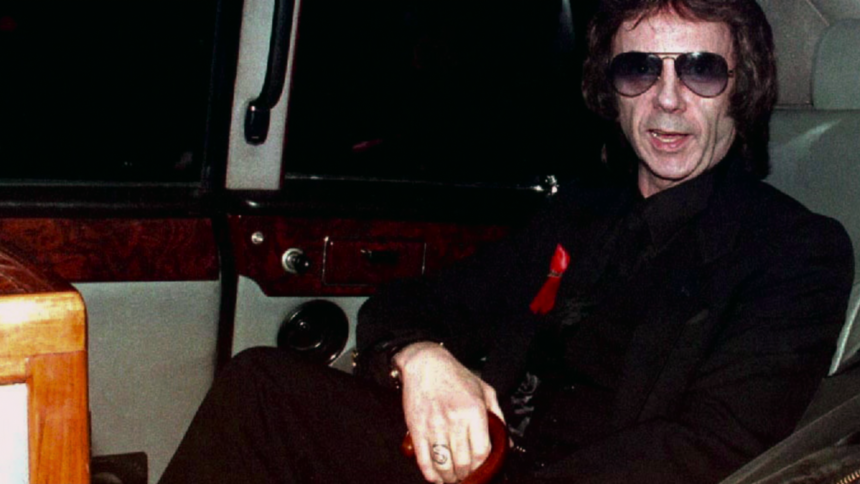Introduction to Gary Phillip Spector
Gary Phillip Spector is a name that resonates deeply within the music industry. Known for his innovative production techniques and distinctive sound, he has left an indelible mark on countless artists and genres. From the Wall of Sound to chart-topping hits, Spector’s influence runs deep, shaping pop music as we know it today. But there’s more to this enigmatic figure than just his musical genius; his life was filled with extraordinary highs and troubling lows. Join us as we explore the fascinating journey of Gary Phillip Spector—a true icon whose legacy continues to spark conversations in both admiration and controversy.
Early Life and Musical Influences
Gary Phillip Spector was born on December 26, 1939, in the bustling borough of The Bronx, New York City. Growing up in a Jewish household, he faced challenges early on that shaped his character and creativity.
Music surrounded him from a young age. His mother played piano and encouraged artistic expression. This environment ignited his passion for sound.
As a teenager, Spector was captivated by rock ‘n’ roll’s burgeoning scene. Artists like Elvis Presley and Little Richard left an indelible mark on him. He absorbed their styles and began experimenting with music production.
His high school years were pivotal; he befriended musicians who would later become part of his iconic career trajectory. These connections fueled his ambition to create something unique—a blend of pop melodies fused with innovative production techniques that would redefine the industry forever.
Rise to Fame: Spector’s Impact on the Music Industry
Gary Phillip Spector’s ascent in the music industry was nothing short of revolutionary. In the early 1960s, he pioneered the “wall of sound” technique, layering instruments and voices to create a rich sonic tapestry. This innovative approach transformed pop music forever.
His work with The Ronettes and The Crystals showcased his ability to blend catchy melodies with intricate arrangements. Tracks like “Be My Baby” became instant classics, resonating deeply with audiences worldwide.
Spector’s influence extended beyond just production techniques; he shaped an entire generation of musicians. Artists from diverse genres looked up to him as a trailblazer who dared to push boundaries.
Even today, his signature sound can be heard echoing through contemporary artists. Many credit Spector for paving the way for future producers to explore new dimensions in music creation. His impact is undeniable and continues to inspire those who follow in his footsteps.
Controversy and Legal Troubles
Gary Phillip Spector’s life was marked by as much controversy as musical brilliance. His eccentric personality often overshadowed his artistic achievements.
The most notable incident came in 2003, when he was charged with the murder of actress Lana Clarkson. Their tumultuous relationship culminated in a tragic event that shocked the music world and beyond. The trial revealed layers of Spector’s complex character—his genius intertwined with instability.
Spector received a sentence of 19 years to life for second-degree murder. This legal battle captivated public attention, turning him from celebrated producer to convicted felon almost overnight.
His turbulent behavior offstage also raised eyebrows throughout his career—from erratic public appearances to feuds with various artists. These incidents blurred the lines between genius and madness, leaving fans divided over how to perceive his legacy amidst the chaos.
The Legacy of Gary Phillip Spector’s Music
Gary Phillip Spector’s music left an indelible mark on the industry. His innovative techniques reshaped how records were produced and perceived.
The “Wall of Sound” remains a defining element in pop and rock music. It transformed simple melodies into rich, complex compositions that captured listeners’ hearts.
Spector’s influence can be seen in the works of numerous artists who followed him. Musicians like Bruce Springsteen and The Beatles drew inspiration from his distinctive style.
Even decades after his peak, contemporary producers still reference his methods. They seek to evoke the same emotional depth that Spector achieved with each track.
His catalog continues to resonate today, showcasing timeless themes of love and loss. Songs like “Be My Baby” transcend generations, proving their power lies beyond mere nostalgia.
Lesser-Known Facts and Trivia About Spector
Gary Phillip Spector had some quirks that set him apart from other music producers of his time. For starters, he was known for his “Wall of Sound” technique—layering instruments and vocals to create a rich, full sound. This approach transformed pop music in the 1960s.
He wasn’t just about studio magic; Spector had a flair for dramatic visuals too. He often insisted on elaborate stage setups during performances, believing that presentation was crucial.
Another intriguing aspect is his infamous temper. Many artists and collaborators found working with him both exhilarating and intimidating due to his unpredictable behavior.
Spector also had an interesting sense of style. His signature look included sunglasses indoors—a trademark that became synonymous with his persona.
Despite being primarily recognized for rock and pop, he dabbled in various genres throughout his career including classical music arrangements.
Conclusion: The Enduring Influence of a Musical Genius
The impact of Gary Phillip Spector on the music industry is profound and undeniable. His innovative techniques reshaped how music was produced and consumed. With his signature “Wall of Sound” approach, he created an auditory experience that transcended traditional boundaries, allowing artists to explore new creative avenues.
Spector’s influence extends beyond just his production style; it resonates in the works of countless musicians who followed him. From pop to rock, many have drawn inspiration from his elaborate arrangements and emotional depth. Even today, emerging artists reference his work as a foundational element in their own creations.
While controversies may cloud parts of his legacy, they do not diminish the brilliance he brought to music. His ability to evoke powerful emotions through sound continues to inspire listeners around the world. The enduring nature of Spector’s contributions ensures that he will remain a vital figure in discussions about musical genius for generations to come.
As we listen to modern tracks influenced by Spector’s work or discover old classics revived through contemporary interpretations, it’s clear that Gary Phillip Spector’s legacy lives on—an indelible mark etched into the fabric of popular music history.











